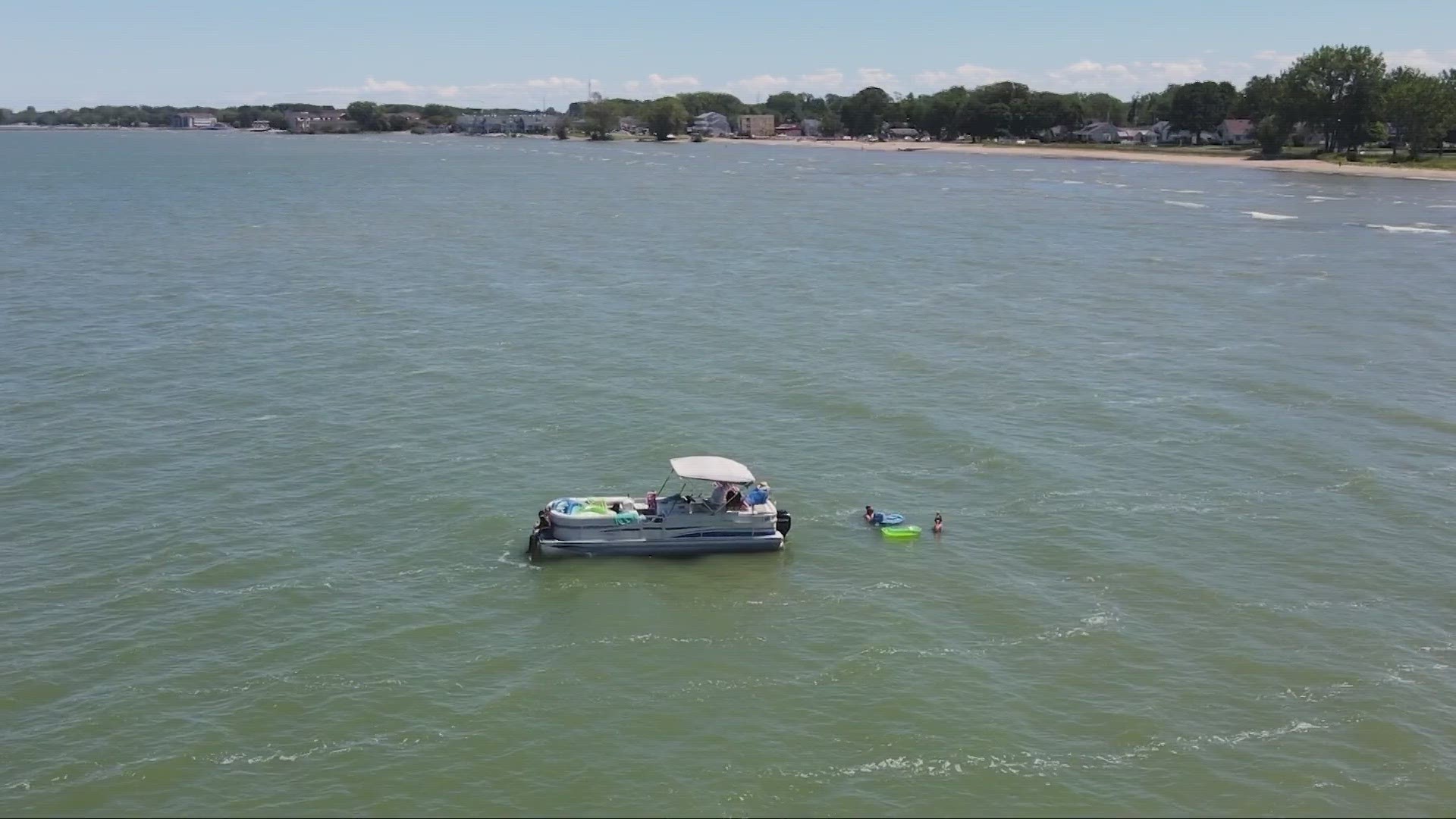CLEVELAND — We all know Northern Ohio comes to an end once you run into Lake Erie. Some of us don’t do much with the lake at all, some of us occasionally play in the lake, and some of us live by or look at Lake Erie every single day.
Regardless of where you fall in that spectrum, I’ll bet the majority of us don’t know what makes our lake, well, great.
Let’s get to know our beautiful water source.
Lake Erie is the shallowest of Great Lakes with an average depth of 62 feet. Why is this important? Well, for one, this enables it to heat up quickly in the spring and early summer.
Water temperatures reach into the 70s during the summer months which turns Lake Erie into a popular recreational destination. From boating and sailing, to paddle boarding and jetskiing—there’s no shortage of water activities off our northern shores once it warms. Lake Erie is popular with sports fishermen and it boasts an extensive walleye fishery. Charter fishing boats also take tourists out to catch small mouth bass.
On the flip side, Lake Erie can also cool down quickly because of how shallow it is. And it cools down a lot. To the point that it can freeze over completely during the coldest of winters—more so than any of the other Great Lakes. Yes, technically you could walk the 57 miles from Cleveland to the southern shores of Canada during the coldest of cold winters—but I wouldn’t recommend it—have you felt that wind off the lake in the winter?
Speaking of wind off the lake, when that cold arctic air blows over our warmer lake water in the late fall and winter—something called lake effect snow can develop. This is one thing that our lake gives us that may not always have the best of receptions. Likely because it keeps giving and giving…and well giving well into the winter months. The average annual snowfall ranges from 20-40 inches for most of northern Ohio, with the exception of the snowbelt where 40, 60, 80, even up to 100 inches may fall in a given season due to lake effect snow courtesy of Lake Erie.
Lake effect snow isn’t unique to Lake Erie. All of the Great Lakes produce it, especially Lake Ontario and Lake Superior. While Erie, Pennysylvania's average of 104 inches per year is impressive, locations off Lake Superior and Lake Ontario take the cake. Marquette, Michigan, for example, averages nearly 150 inches per year up there in the UP of Michigan. Syracuse, New York, off of Lake Ontario averages a shovelable 128 inches of snow per season.
As the southernmost of the Great Lakes, the majority of Lake Erie's water flows in through the Detroit River from the upper lakes — Lake Superior, Lake Michigan and Lake Huron — as well as tributaries such as the St. Clair River and Lake St. Clair. All of our rivers here in Northeast Ohio actually flow into Lake Erie. That’s often times why the lake appears muddy after a period of heavy rainfall. The fast flowing water in our rivers will often bring lots of muddy water into the lake. Lake Erie’s main outlet is Niagara Falls. The Niagara River, the source of the falls, runs 36 miles and connects Lake Erie and Lake Ontario, which eventually finds its way into the Atlantic Ocean via the St. Lawrence River. It’s been calculated that the average drop of water would take over 200 years to pass from Lake Superior to the Atlantic Ocean.
Finally, you may think boating and fishing is big on Lake Erie, and you’re right. But Lake Erie is also a bird-watcher’s paradise as there is never a dull season. The shores and open waters provide a spectacle like no other in the entire Great Lakes. Waterfowl galore pack marshes and the open lake waters and marsh birds breed in coastal wetlands. Winter brings northern ducks, gulls, and raptors. The Lake Erie Marsh Region is recognized as globally important for migratory birds as millions of them stop here to feed and rest every spring and fall during their long-distance migrations. Lake Erie shorelines and attendant inland natural areas are also home to a large number of permanent residents where nearly 400 bird species have been documented. Visiting birders travel to this region of northwest Ohio to observe and enjoy this spectacle, bringing millions of dollars to local lakeshore communities.
Why is Lake Erie such an attractive and important place for birds? Lake Erie represents a barrier to most migrating passerines (perching birds) and raptors. Many birds are reluctant to cross open water when the opposite shoreline cannot be seen, which results in major concentrations along the southwestern shore of Lake Erie in the spring, unparalleled in the Midwest. The opposite phenomenon occurs on the north shore of Lake Erie in autumn, making public areas along the shores of Canada popular bird-watching spots. With the exception of the Gulf Coast, no other region of eastern North America can demonstrate concentrations of migrating birds like Lake Erie’s coastline.
So happy Great Lakes Awareness Day, folks. Let's get out there and celebrate and help protect "Our Greatest Lake," Lake Erie.

